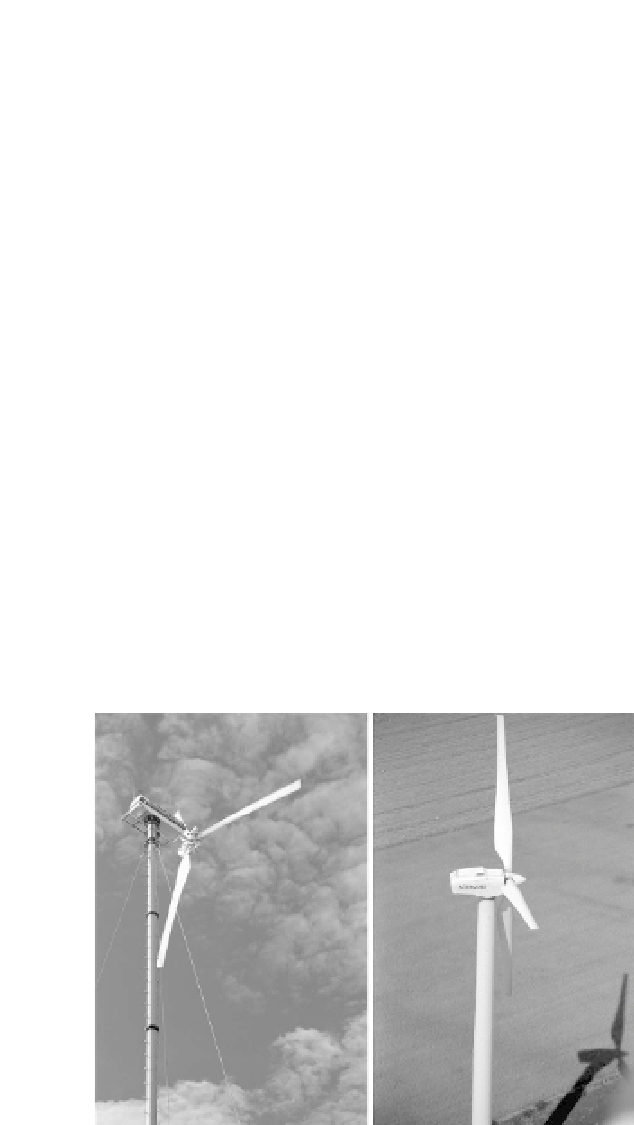Environmental Engineering Reference
In-Depth Information
bladed downwind machine with passive yawing, a guyed pipe
and a “schlaggelenk” rotor that was rarely used on wind turbines.
In the late 1980s, Südwind managed to sell a couple of single wind
turbines to various owners in northern and western Germany.
Those were commonly 10, 15 or 30 kW turbines of which some
were funded, for example, within the 1989 support program. The
15 kW design, called E710, also underwent tests at the Kaiser-
Wilhelm-Koog test site. In the late 1980s a 30 kW machine was
built that was based on the previous 15 kW design. This larger
machine was also tested at the DEWI test site near Wilhelmshaven.
Some dozens of the 30 kW and 45 kW, an up-scaled version, were
sold. In the early 1990s Südwind was searching for new designs
for larger wind turbines in the 200/300 kW class. It came from
the Vind-Syssel, which manufactured various sizes designed by the
Danish Folkecenter for Renewable Energy. The design used had an
integrated drive train. Südwind applied this design and developed
a 270 kW stall-regulated wind turbine that was marketed since
1993. Later a 330 kW up-scaled version followed. Of both the
270 kW and 330 kW some dozens of units were sold to German
customers. In the mid-1990s, Südwind sold licenses to Indian
Suzlon, which produced several hundreds of the 330 kW turbines
for Indian wind projects.
Figure 18.15
A 30 kW Südwind turbine near Vreden, Germany, 2008. Note
the guyed pipe and the downwind rotor (left); A Südwind
S-46 600 kW turbine located near Lichtenau, Germany, 2008
(Photo: Arne Jaeger).


Search WWH ::

Custom Search